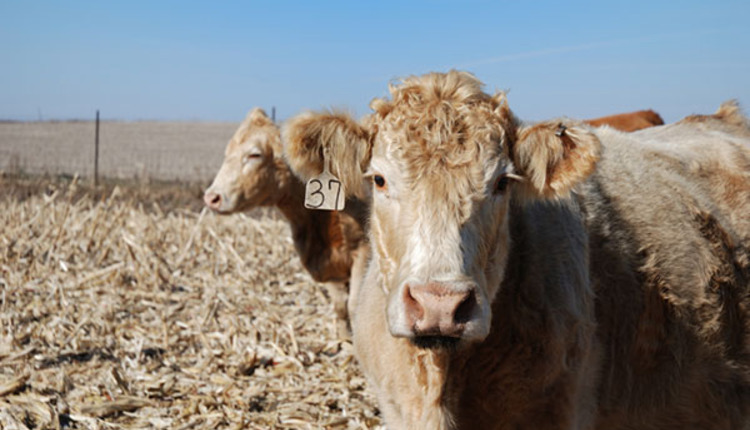Corn residue: A valuable grazing resource |
| By Hay and Forage Grower |
|
|
 As combines roll, they leave behind a conglomeration of corn leaves, husks and stalks. Farmers figured out many years ago that this corn residue can provide a relatively low-cost source of nutrition for beef cows through the late fall and winter months. The degree of benefit derived from grazing corn residue depends largely on management. Just as with perennial forage pastures, there are several management considerations and options. Following the combine with cattle will put more condition on the cows and faster gains on young stock. “From a nutrition standpoint, start grazing cornstalks as soon as possible,” states Bruce Anderson, University of Nebraska extension forage specialist. “The nutrient value of corn residue declines the longer it is exposed to weathering.” Anderson also suggests taking time to check fields for excess grain that may have escaped the combine. Where grain losses are high, cattle may be subject to higher intakes than they are used to; this situation can lead to nutritional disorders such as acidosis and founder. Anderson suggests adapting cattle to higher grain rations before they are turned to fields with excessive combine grain losses. Not all corn residue is created equally, and cattle figure this out quickly. First, they will seek out the grain, then the husks and leaves, and finish with the stalks. Stocking rate becomes an important consideration when grazing corn residue. “Strip grazing by giving animals only one or two weeks worth of stalks at a time uses them more efficiently than allowing cattle to roam an entire field for a couple of months or longer. Strip grazing permits a higher stocking rate and provides a more uniform diet. However, if heavy snow or mud occur before you graze all areas, some good quality feed can be lost,” says Anderson. Allowing cattle access to an entire field will result in high early gains, but as time passes and cattle consume most of the grain, husks and leaves, nutritional value will quickly wane. With this strategy, feed supplements will be needed late in the grazing period. If cows are forced to consume primarily stalks, they will lose body condition. Anderson reminds producers to provide salt, calcium, phosphorus, and vitamin A free choice at all times, then once all the grain is gone, offer about a half pound per day of an all natural protein to meet nutrient needs. The University of Nebraska provides a “Corn Stalk Grazing Calculator” spreadsheet that allows producers to formulate a cornstalk grazing plan based on cattle numbers and resources. It can be found here. |
